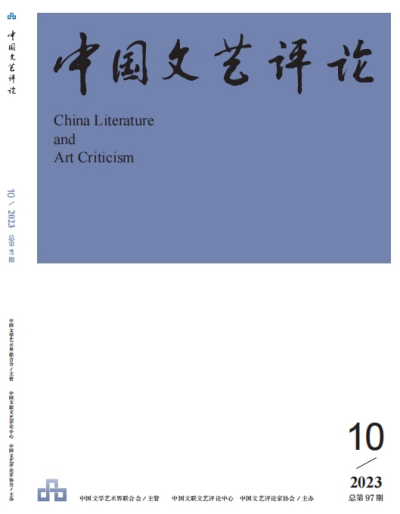
Hot Spot Observation: Literary Criticism and Cyber Violence Control
■ The "Factual Reason" and "Emotive Reason" of Literary and Art Criticism (PP. 4-10)WANG Desheng
Abstract: The "factual reason" of literary and art criticism is the fact of existence of literary and artistic works, literary and artistic creations and activities, etc., while the critical consciousness of "following the matter of fact and the reason" is the key to the value judgment of literary and art criticism. At the same time, literary and art criticism implies the role of the subject's emotional consciousness, and the "emotive reason" inherently structures the judgmental stance of criticism. This is also the particularity of literary and art criticism, which is not confined to the description of general facts, but must be able to find a deeper meaning and a higher level of value in the specific "factual reason" of literature and art. In the face of all kinds of sensual clamor and quick consumption coming from the Internet world, literary and art criticism especially need to continuously improve the critics' rationality, strengthen the value construction consciousness of the commentators, and realistically grasp the specific scale of literary and art criticism from two aspects: the evaluation principle of "factual-reason oriented emotive reason" and the evaluation method of "the emotive reason based on factual reason."
Keywords: literary and art criticism, value judgment, factual reason, emotive reason
■ Self-discipline and Heteronomy of Network Literature and Art Criticism in the Digital Age (PP. 11-17)ZHANG Huiyu
Abstract: Cyber violence in the field of literature and art seriously damages the market mechanism and rationality of cultural industries as well as the public discursive atmosphere. We can address this phenomenon and reduce cyber violence from three perspectives: the public nature of online platforms, the autonomy of fan culture, and the supervisory functions of laws and regulations. In the process of governance, it is necessary to fully recognize the positive functions of netizens' participation in literary and art criticism, while also preventing online violence from interfering with the cultural market. This requires self-discipline in the public space of the Internet, and the formation of an ethical self-discipline for public discussion. Secondly, it is necessary for the network platform to strengthen management and prevention, and reduce the risk of cyberbullying in technology. At the same time, it is also necessary to define the basic behavioral bottom line through regulations and laws. In modern society, literary and art criticism is the most important independent space for cultural and social discussions, and is a public sphere that demonstrates pluralism and consensus. Its autonomy is reflected in the self-discipline of critics, who comment on literary and art works in a rational context, while heteronomy refers to the regulation and punishment of online violence through regulations and laws. We hope to combine self-discipline of commentators with mandatory external supervision to eliminate cyber violence in the field of literary and art criticism.
Keywords: network literature and art criticism, cyber violence, digital platforms, fan culture
■ Countering Cyber Violence with Literary and Art Critical Discourse (PP. 18-25)ZHAO Lijin
Abstract: The occurrence of cyber violence in the field of literature and art is manifested in the fact that the perpetrators replace literary and art criticism with moral judgment, and carry out personal attacks and insults on the creators of literature and arts, thus jeopardizing literary and art criticism. At a deeper level, this phenomenon reflects the dilemma and problems of contemporary literary and art criticism, that is, the "loss of words" of traditional literary and art criticism in the face of new literary and artistic phenomena, and the potential "violence" crisis of online literary criticism due to the manipulation of capital and the lack of rationality. Constructing an effective literary and art critical discourse is the important path to get rid of the suppression of moral discourse and counteract the cyber violence.
Keywords:literary and art criticism, cyber violence, discursive construction
■ The Anomie of Cyber Subculture and Cyberbully in New Media Literary Criticism(PP. 26-31)ZHENG Huanzhao
Abstract: The emergence of cyberbully in new media literary criticism is not only a result of the risks of technological development and the driving force of unhealthy media and capital, but also a result of the anomie development of cyber subculture. Generally speaking, its main manifestations include malicious smearing of normal literary and artistic comments, group criticism caused by value conflicts in different subcultures, fan criticism and the phenomenon of "trampling" on their discourse, as well as infringement caused by memes spreading beyond boundaries. The consequences of cyberbully in literary and art criticism not only harm the personal rights of relevant performers and disrupt the normal environment and evaluation system of literary criticism, but also lead to the loss of literary credibility and affect the healthy development of literary ecology. To constrain the anomie of cyberbully in literary and art criticism, it is necessary to return to the complex structure of cyber subculture and contemporary entertainment economy and industry, and explore the boundaries and scales of literary and art criticism as a subculture practice.
Keywords:new media literary criticism, cyberbully, cyber subculture
Topical Design:The Challenge of Design Aesthetics in the Age of ArtificialIntelligence
■ Design and Rationality: Aesthetic Reflections on Artificial Intelligence Design (PP. 32-46)TAO Feng & LIANG Zhengping
Abstract:This article first sorts out the development process of artificial Intelligent design and attempts to define and analyze it: AI design mainly refers to the process of automatic or semi-automatic generation of artistic design products by AI programs. Secondly, this article makes the following reflections on AI design from the aesthetic perspective. 1) It discusses the new human-machine relationship in the era of artificial intelligence, namely, confrontation or rebirth, and points out the challenges and changes of artificial intelligence to design subjectivity. 2) Continuing the debate between Benjamin and Adorno on the era of mechanical reproduction, it mentions that AI design is the embodiment of intelligent cultural industry, and deeply discusses the conflict between freedom and restriction, certainty and contingency in AI design. 3) It puts forward the concept of "design rationality", thinking that it is the reflection and transcendence of instrumental rationality. The aesthetic reflection on AI design requires us to reinterpret the human-machine relationship. Machines are not substitutes for people, but rather aids to people. We should avoid the excessive penetration of artificial intelligence into the creative field, and realize the harmonious coexistence of human and machine under control.
Keywords: AI design, design democratization, interaction design, design rationality
■ Design Aesthetic Transformation in the Age of Artificial Intelligence (PP. 47-59)ZHU Shuai
Abstract: Currently, the Artificial Intelligence Generated Content (AIGC) has penetrated into all aspects of various design fields. Although traditional manual design is still not and cannot be completely replaced by AIGC, with the popularization of AIGC generated design and the establishment of discourse hegemony, its aesthetic paradigm will gradually develop from imitating existing designs to forming its own unique language laws and rules, and gradually affect the aesthetic transformation in the public domain. Although it is still too early to say that the era of artificial intelligence has formed a brand new design aesthetic style, whether inferred from phenomena or logic, artificial intelligence is forming a unique aesthetic style. We need to conduct timely analysis and actively respond based on the original intention of the "design to beautify life".
Keywords: artificial intelligence generates content, programmatic creativity, modernism, design aesthetics, aesthetic paradigms
Random Thoughts on Art
■ From "Witch Dance" to ChatGPT:The History and Present of the Integrated Development of Art and Technology (PP. 60-72)SUN Xiaoxia
Abstract: In the interdisciplinary context, art and technology are increasingly opening up to each other, and the history of their integrated dialogue also needs to be sorted out. In traditional knowledge forms, the two are unified in the writing of talented individuals in terms of the origin of knowledge, rules and principles, documentary materials and media forms. The specialization of knowledge in modern times has led to the differentiation and imbalance of art and technology. However, as the epistemological value of art is recognized, the logical connection between the two that are indispensable at the philosophical level and mutually supportive in practice can be restored. New technologies such as contemporary artificial intelligence promote the reorganization and renewal of civilization forms, and the integration of the two transforms into an organic collaboration among professional teams. Today, there is a wave of re-integration of art and technology, taking this as an opportunity to inherit the genes of traditional Chinese culture. Thus we are at a new historical starting point.
Keywords: art and technology, individual writing, value imbalance, teamwork, inheriting traditional culture
■ From "Either…Or" to "Both…And": A Contemporary Turn in Literary Interpretation (PP. 73-85)PANG Hong
Abstract: Interpretation is a core issue in the humanities. In contemporary times, there has been a significant turn in literary interpretation from "either…or" to "both…and". For a long time, faced with the conflict between objectivism and relativism, researchers are used to adopting the approach of "either…or", regarding one side as the only standard and ignoring the existence of the other. In recent years, researchers have increasingly shown an attitude of "both…and", trying to find the intersection between objectivism and relativism, so as to strike a balance between identity and difference, past and future, clarity and ambiguity, recollection and suspicion, structure and event and other seemingly irreconcilable binary oppositions. As a way of interpretation, "both…and" provides an opportunity for us to re-examine contemporary literary theories, and also contributes to the positive dialogue and creative transformation of Chinese and Western interpretive thoughts.
Keywords: interpretation, objectivism, relativism, either…or, both…and
■ "Wandering in the Arts": Interpreting History and the World of Meaning (PP. 86-97)LIU Qiangqiang
Abstract: The connection between the categories of "wandering" and "art" originated with Confucius, in which "art" originally referred to the "six arts" (짇論). In the history of Confucianism, different modes of interpretation have been developed for the term "wandering in the arts". In the mode of metaphysics, "wandering in the arts" was not emphasized by the interpreters of the scriptures, and presented a situation that was separated from "with Tao as the ambition, virtue as the basis, and benevolence as the foundation". After the emergence of Neo-Confucianism in the Song Dynasty, the significance of the cultivation of one's moral character contained in "wandering in the arts" was gradually revealed. Through Zhu Xi's interpretation, the "wandering in the arts" is logically connected with the said of "with Tao as the ambition, virtue as the basis, and benevolence as the foundation", and becomes the ultimate way and complete state of Confucian personality cultivation, thus establishing the classical interpretive mode of "wandering in the arts". With the development of history, the two categories of "wandering" and "art" have also changed. Among them, "wandering" was integrated into the thought of Zhuangzi, and "art" was expanded to calligraphy, painting, etc., which led to the evolution of "wandering in art" into a proposition of art. On the one hand, "wandering in arts" objectively gives calligraphy, painting and other arts an orthodox status, showing the change and transfer of discourse power; on the other hand, it dissolves the professionalism and technicality of calligraphy, painting and other arts, promotes and conforms to the transformation of art from technical activities to the activities of cultivating one's moral characters, and highlights the understanding and positioning of the literati in the classical period towards art.
Keywords: Wandering in the Arts, Confucian, six arts, art, cultivating one's moral characters
Discipline Construction
■ Thriving through Interweaving and Exchanging:On the Development of Quyi as a Discipline and the Construction of the Native Chinese School of Acting (PP. 98-107)HAO Rong
Abstract: In 2022, Quyi, an umbrella term for a variety of Chinese speaking and singing art forms, was included in the catalogues of academic disciplines of the Ministry of Education for both undergraduate and postgraduate education. Students may apply for undergraduate and postgraduate programs and accordingly obtain bachelor's, master's and PhD degrees. This means that Quyi may be studied in colleges and universities as an academic discipline. It is placed on par with Xiqu, or "traditional Chinese operas", and, together with theatre studies and film and television studies, makes one of the important blocks of art as a first level discipline. Consequently, the horizon of theatre and film and television studies is pushed further, and a unique training system and modern teaching approach may be developed to train Quyi performers who are versatile in traditional arts and meet the requirements of acting in a modern society. With such a system, the traditions of Quyi and Xiqu arts may be modernized, and the theatre and film arts indigenized. As a result, an acting system may be built through interweaving and exchanging, which combines the beauty of spoken drama, Quyi and Xiqu and features of Chinese characteristics, styles and confidence.
Keywords: Quyi, theatre and film arts, shuochang (speaking and singing) art, narrative acting, native Chinese school of acting
Interview with Renowned Experts
■ Returning to the Basics of Literary Studies: Interview with Literary Theorist SUN Shaozhen (PP. 108-123)Interviewed by YE Qin
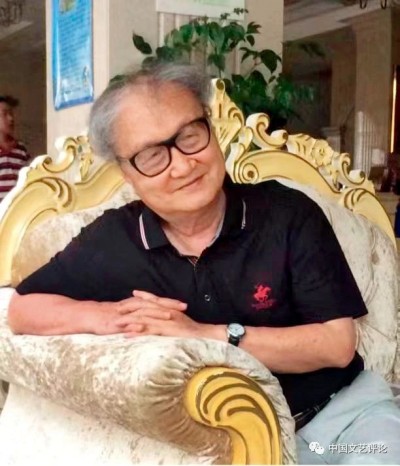
Inside Front Cover
Chinese Literary Critics: RAO Shuguang
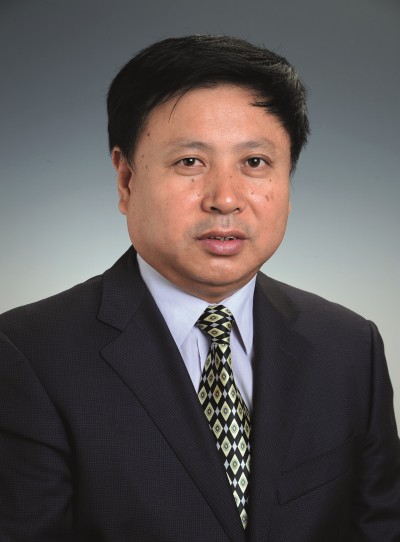
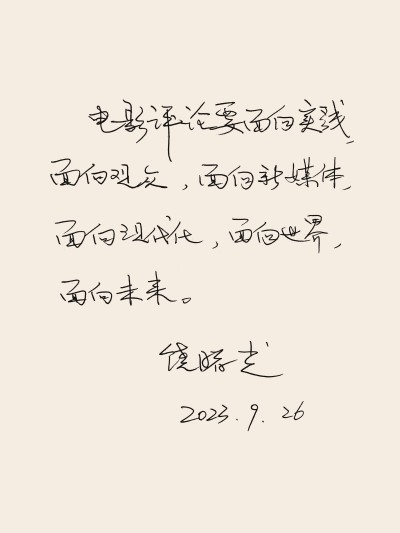
Inside Back Cover
Review of the Second Batch of bases of Chinese Literary and Art Criticism:The base of China Literary and Art Criticism (Jinan University)
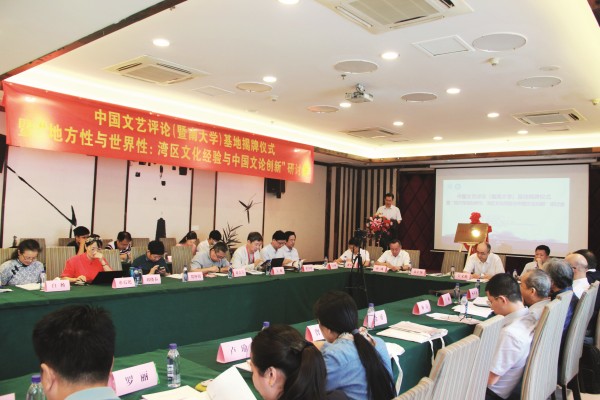
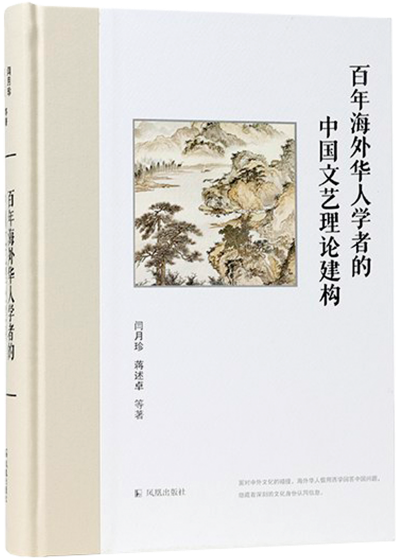
Back Cover
Poster of the 2nd Forum on Literary and Artistic Innovation in Guangdong-HongKong-Macao Greater Bay Area
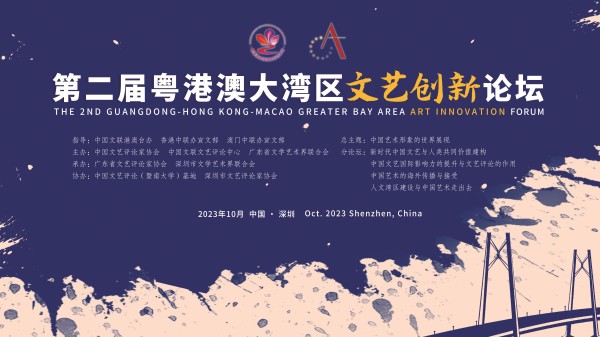
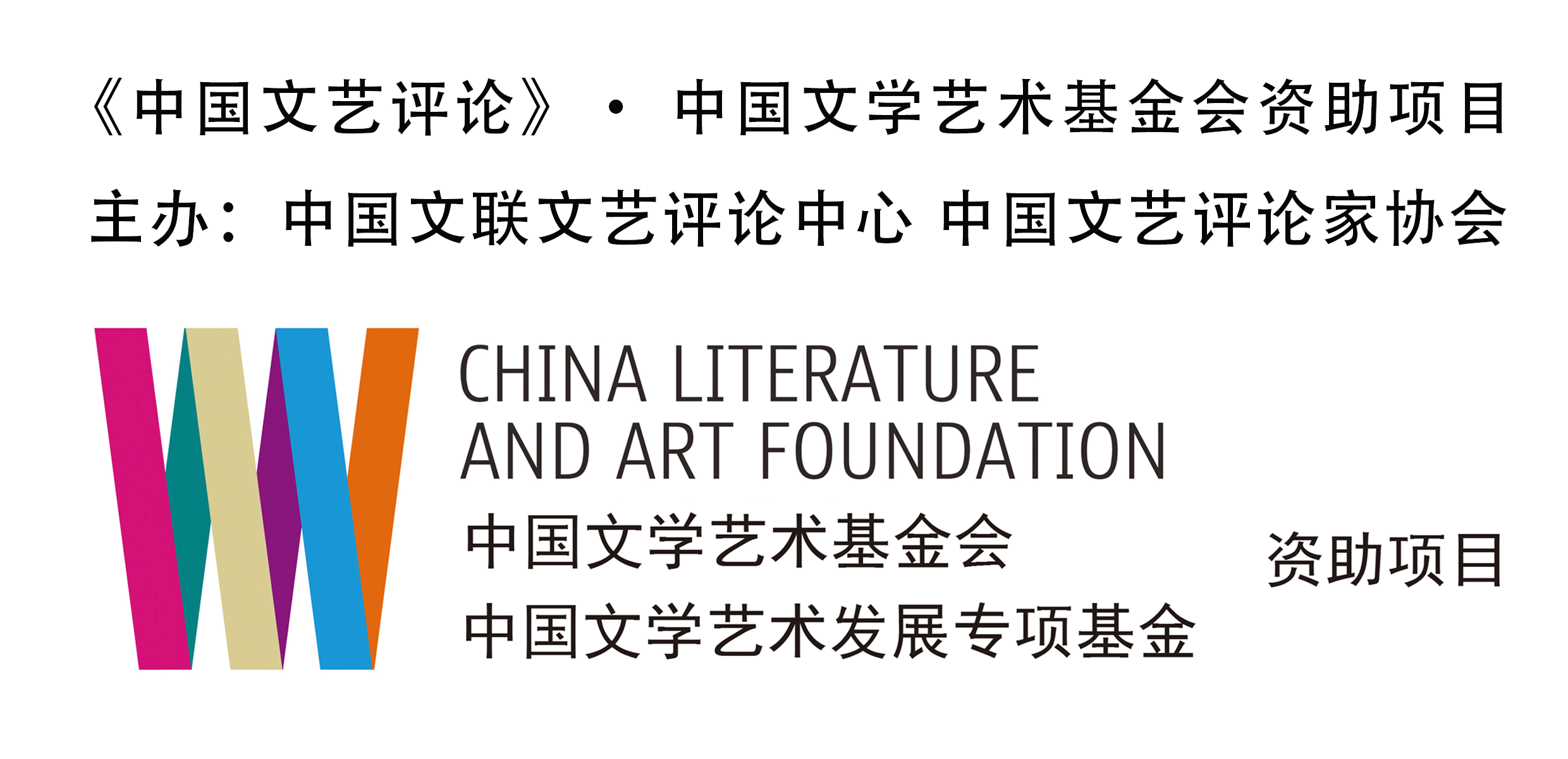

中国文艺评论网
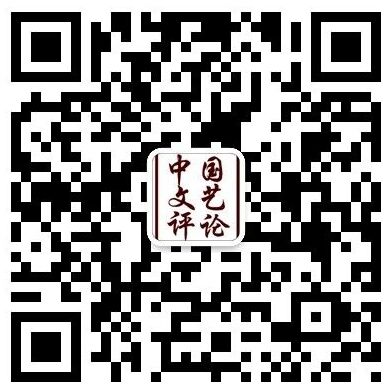
“中国文艺评论”微信公号

“中国文艺评论”视频号